France is one of the most culturally and historically rich countries in the world, a fact attested by the millions of people who visit it each year. There is something about France that inspires our imaginations.
It’s not only Paris or Tour Eiffel that make us see France as a romantic destination but also the numerous charming french castles that dot the country from Loire Valley to Normandy and Provence and anywhere in between.
Whether you prefer medieval fortresses, charming châteaux, or opulent palaces, France has it all. Below is our list of the most extraordinary castles in France to visit.
Disclaimer: This post contains affiliate links. This means that should you click on certain links and then subsequently purchase a product, I will receive a small commission.
Map of Castles in France

41 Famous French ChateauX to Visit
1. Château de Chenonceau
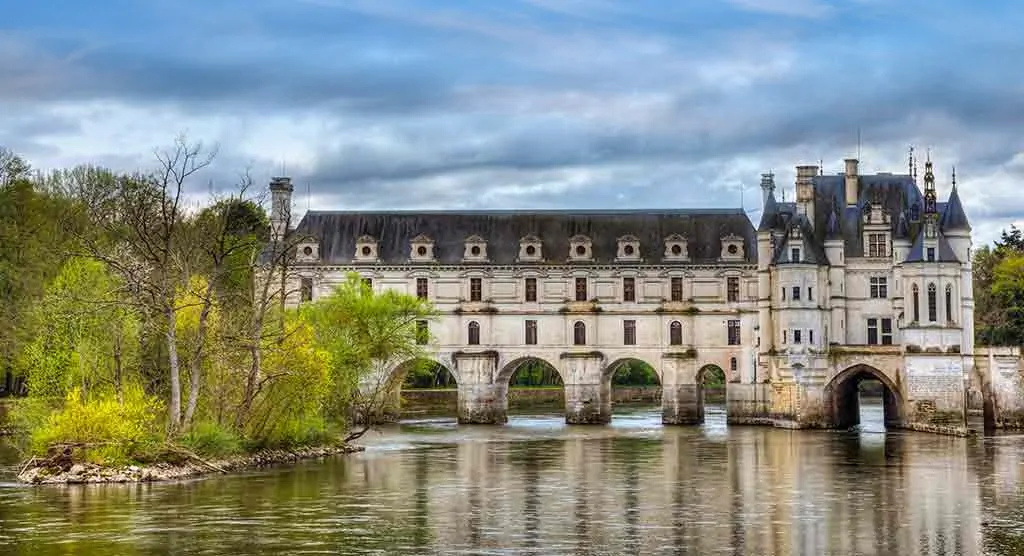
Château de Chenonceau was built in the Renaissance style in the 16th century by Catherine Briçonnet and her family. The beautiful château sits in the heart of the Loire Valley with spectacular views over the Cher River.
Due to its beauty, it was often disputed between powerful French women like Queen Catherine de Medici and Diane de Poitiers. Besides the fairy-tale exterior with towers and turrets, the interiors of the castle are also stunning, housing magnificent art collections and Renaissance furniture and tapestries.
Where: Touraine
When: 16th Century
Open for visit: Yes, check here for more information.
Click here to book your tickets to the Château de Chenonceau.
2. Azay-le-Rideau Castle
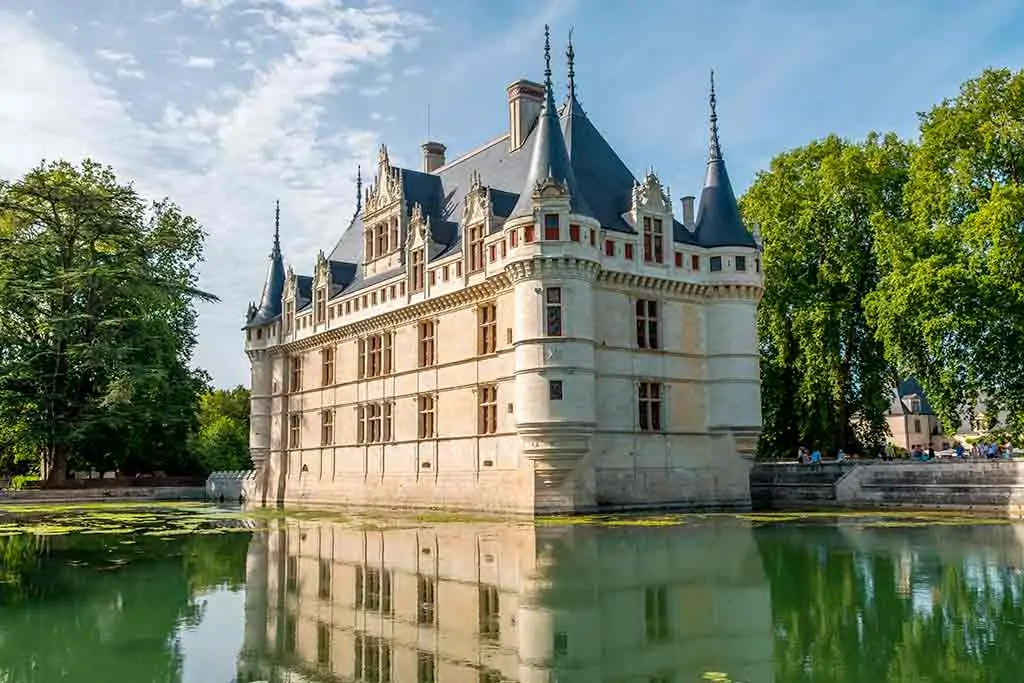
This 12th-century castle has had a tumultuous history, being burned to the ground in the Middle Ages by King Charles VII. After a century of ruin, Azay-le-Rideau was rebuilt, but it suffered many periods of neglect as its ownership frequently changed between various kings, knights, and nobles.
The castle reached its current magnificence at the beginning of the 19th century. Although the interiors lack furniture and decorations, the exterior has a charming configuration. The grounds also include a beautiful formal garden.
Where: Azay-le-Rideau
When: 12th Century
Open for visit: Yes, check here for more information.
Click here to buy your tickets to the Azay-le-Rideau Castle.
3. Château de Montrésor

Originally a medieval fortress, Montrésor was rebuilt into a beautiful Renaissance mansion, only to be neglected after the French Revolution. The current magnificence of the place is due to the Polish noble family who acquired the property in the 19th century and renovated it extensively.
The family also moved their rich art collections and period furniture into the castle. Now considered a historical monument, Montresor surprises with its picturesque location and classic architecture. The castle is located on the right bank of the Indrois River, in the region known as Central Loire Valley.
Where: Montrésor
When: 1493
Open for visit: Yes, check here for more information.
4. Château Comtal de Carcassonne
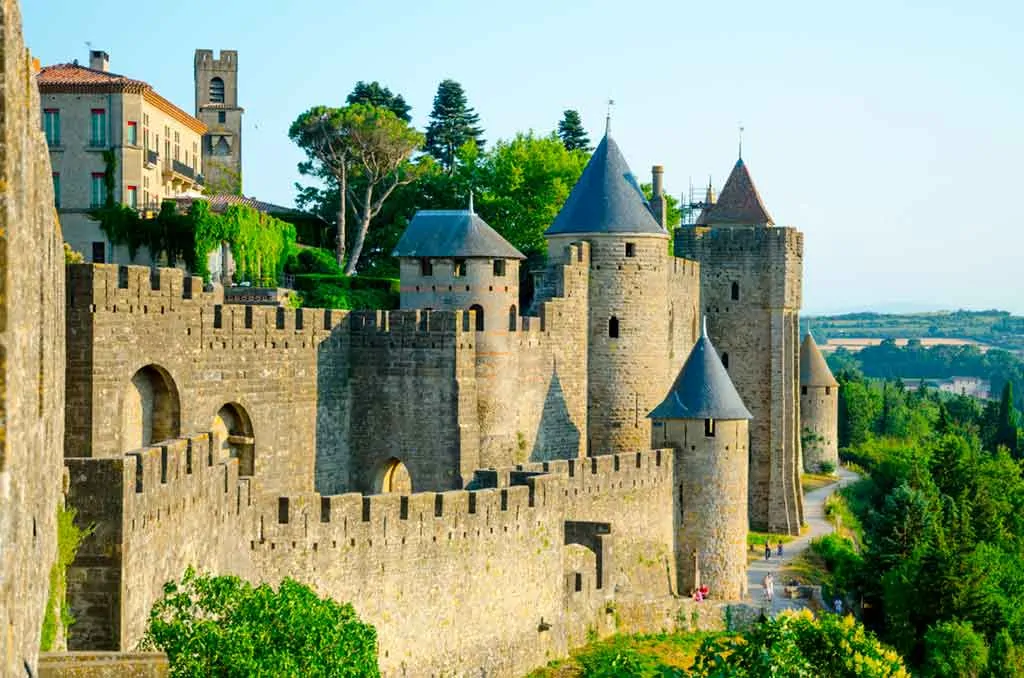
Located in the south of France, Château Comtal de Carcassonne is a charming castle perched on a hill at the center of Carcassonne, a fortified medieval town.
Château Comtal is a must-see for lovers of historic beauty and romantic settings, especially as it is a UNESCO heritage site. With more than fifty towers that offer views over the Aude River, the castle is straight out of a storybook.
Due to its location, the castle is highly attractive as a day trip from either Toulouse or Montpelier.
Where: Carcassonne
When: 12th Century
Open for visit: Yes, check here for more information.
You might be interested in the following:
Carcassonne: Castle and Ramparts Skip-the-Line Ticket
Cité de Carcassonne: Guided Tour
5. Haut-Koenigsbourg
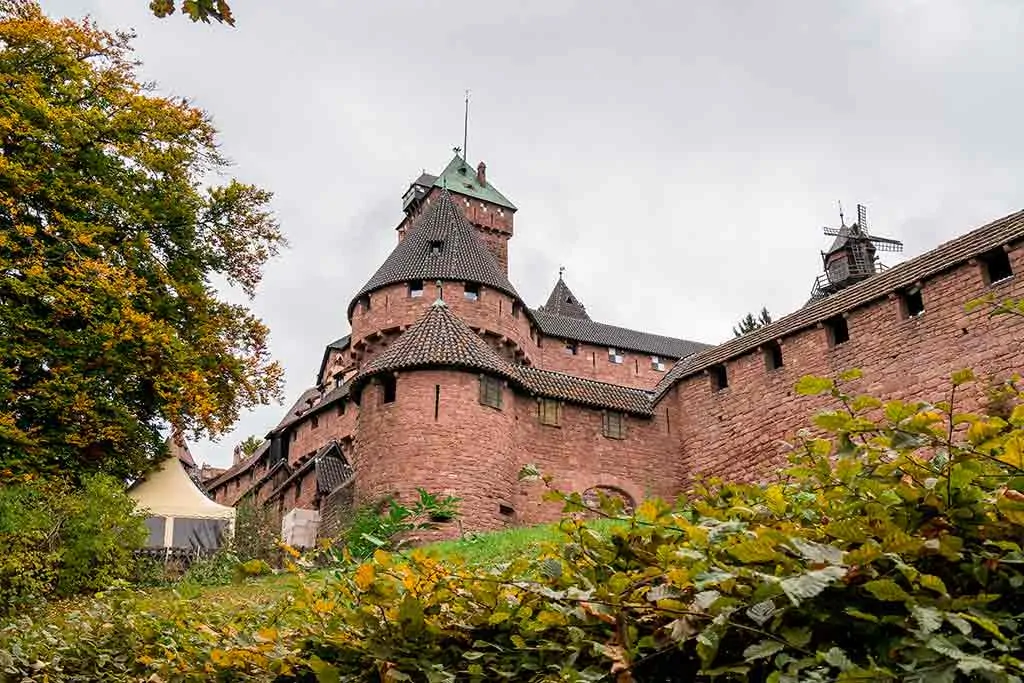
Originally a 12th-century castle built on a rocky hillside above Alsace, Château du Haut-Koenigsbourg has suffered many transformations over the centuries.
The current form of the castle was developed at the order of German Emperor Kaiser Wilhelm at the beginning of the 20th century when the Alsace region belonged to Germany. Most recent renovations date from the 1990s. Now the castle is a vast museum of armor, weapons, and medieval artifacts.
One of the most interesting features is the watchtower, which offers visitors stunning views of the area. Haut-Koenigsbourg is a great day trip choice from Strasbourg.
Where: Alsace
When: 12th Century
Open for visit: Yes, check here for more information.
6. Château des Ducs de Bretagne
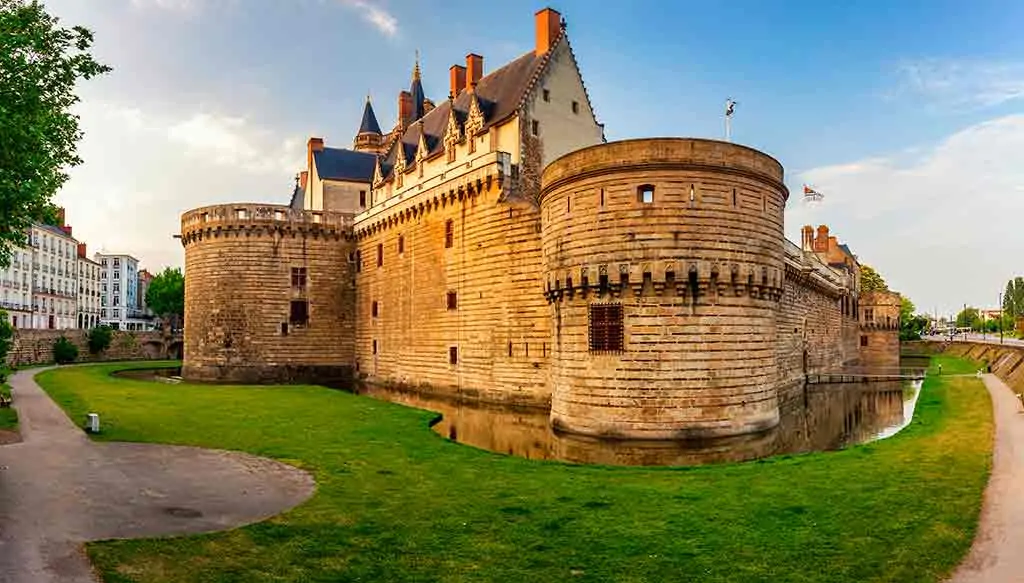
The initial Château des Ducs de Bretagne was built in the 13th century but was demolished two centuries later when the current ducal castle was built to replace it.
The castle was reconstructed by Francis II, the Duke of Bretagne, with the goal of serving as both a military fortress and residence of the Duke and his court. When Bretagne was annexed to France, the castle became the official residence of the kings of France when visiting the area.
The castle also had less glamorous periods, being used as a prison and suffering extensive damage due to fires. Today, however, it is a beautiful museum with a rich history worth exploring.
Where: Nantes
When: First ducal castle was built in the 13th century. It was demolished in the 15th century to make way for the present building.
Open for visit: Yes, check here for more information.
Click here to book your tickets to the Château des Ducs de Bretagne
7. Château d`Amboise
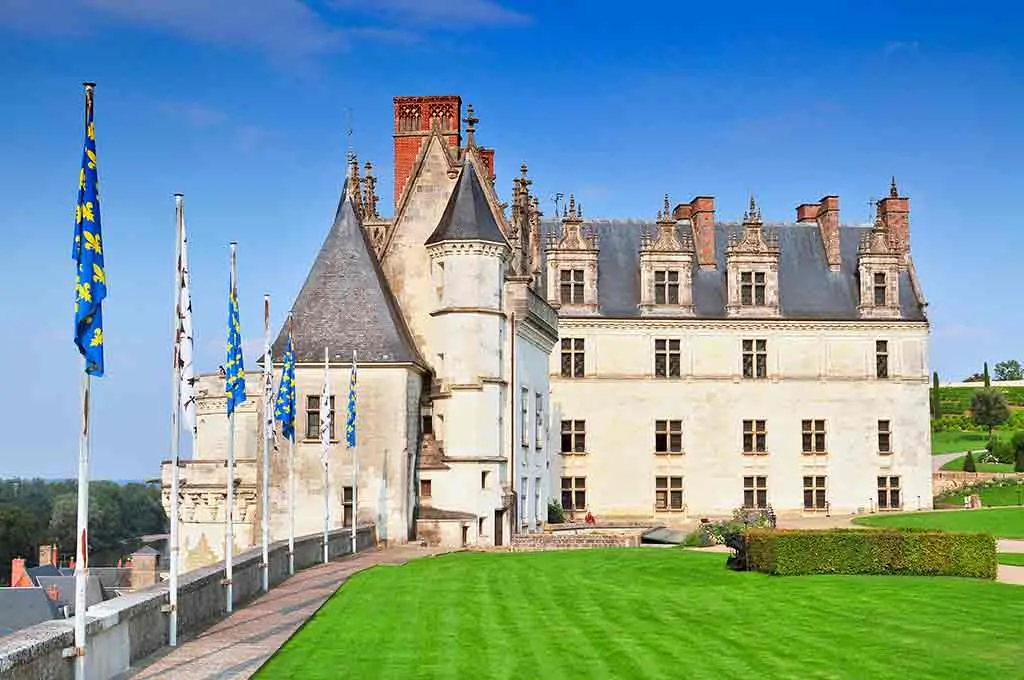
Located in the stunning region known as the Loire Valley, Château d’Amboise has been sitting for centuries in the center of the small town of Amboise. The castle that visitors see today stands on the foundation of a former Roman fortress strategically built on a hilltop.
From its location, the castle overlooks the Loire River and the surrounding areas. A mix of Renaissance and Gothic style features, the castle has beautifully decorated interiors where one can find medieval tapestries and armor, artworks, and period furniture. Interestingly, some of the designs for the renovations run by King Charles VIII belong to Leonardo da Vinci.
Where: Amboise
When: 15th Century
Open for visit: Yes, check here for more information.
Click here to book your tickets to the Amboise Castle.
You might also be interested in:
8. Château de Beynac
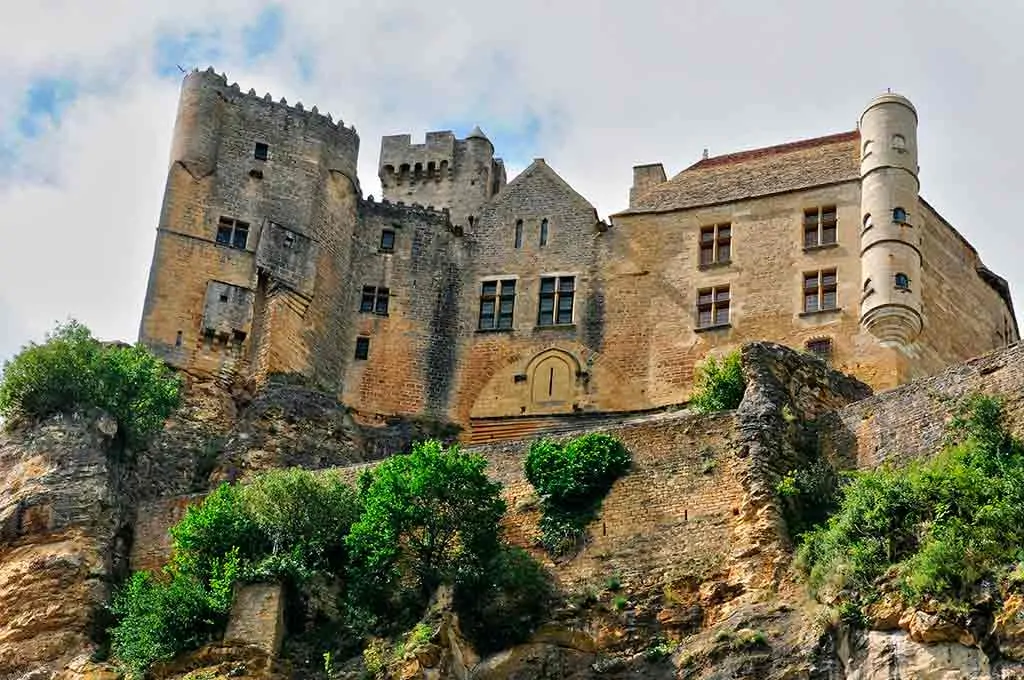
Château de Beynac is a wonderfully preserved fortress strategically built atop a cliff in Perigord. Carved out of rock, the 12th-century fortress is an authentic glimpse into early medieval times. From its spectacular heights, it offers amazing views of the Dordogne Valley and all the other castles in the region.
Where: Perigord
When: 12th Century
Open for visit: Yes, check here for more information.
9. Château de Castelnaud
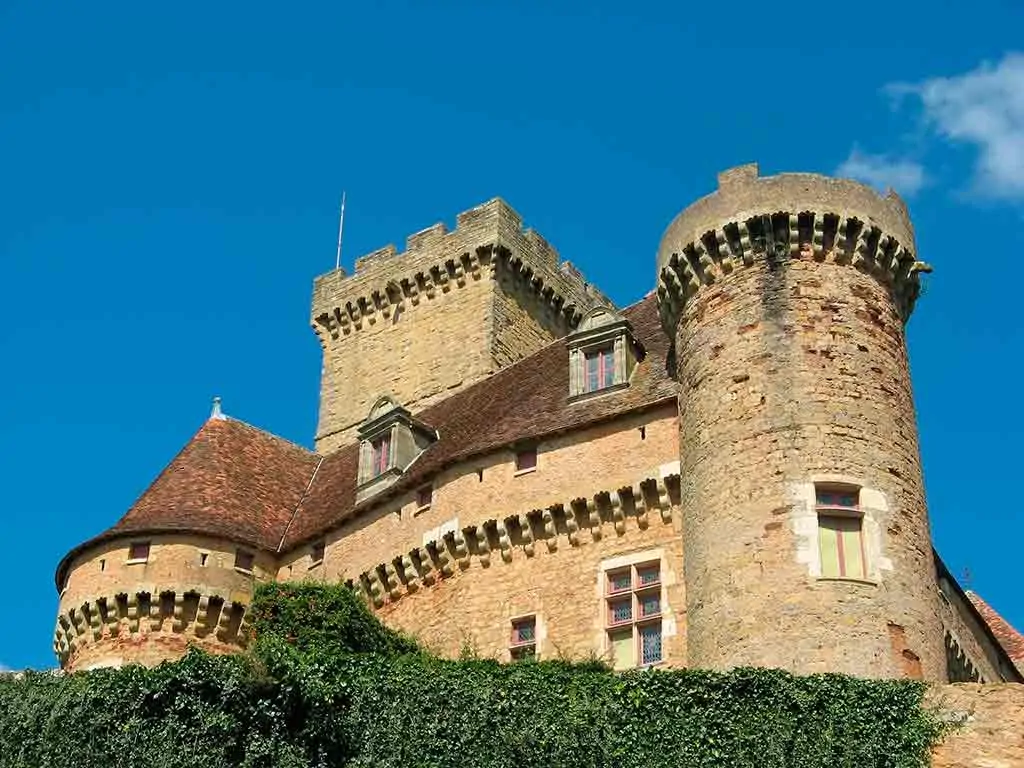
Offering amazing views over the Dordogne Valley, Château de Castelnaud is a beautiful example of a medieval fortress. Built in the 12th century on a rocky hill, the castle went through several transformations, being captured by the English during the Hundred Years War.
After serving an important military role in medieval times, the castle was often abandoned by its owners, which led to deterioration. Spectacular renovations have brought it to its former glory, and today it is home to the Museum of Medieval Warfare and its large collections of weapons and armor.
Where: Dordogne Valley
When: 12th Century
Open for visit: Yes, check here for more information.
10. Château de Chambord

One of the most famous castles in the world and the largest castle in the Loire Valley, Château de Chambord is a quintessential part of France’s history and heritage. Built for King Francis 1, the castle is a striking example of Renaissance-style structures with unique features that contribute to its fairy-tale-like aura. Now a UNESCO heritage site, the castle is surrounded by charming landscaped gardens which visitors can freely explore.
Where: Loir-et-Cher
When: 1519
Open for visit: Yes, check here for more information.
Click here to book your tickets to Château de Chambord
11. Château de la Roche Courbon
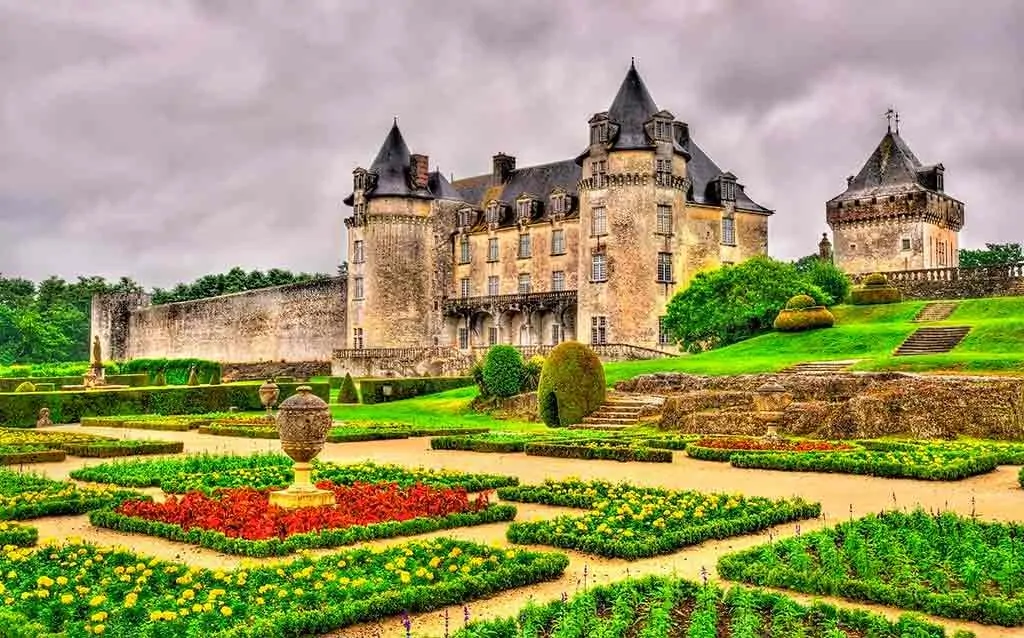
Château de la Roche Courbon is a fortified castle built in the 15th century, which was redesigned in the 17th century to serve as a private residence. Located amid a historic forest, the castle also includes formal French gardens on its grounds.
Visitors can find terraced gardens with flower beds, ornamental ponds, and beautiful orchards. There is also a prehistoric museum outside the castle. The forest is home to interesting prehistoric caves. Château de la Roche Courbon is still a private residence, and inner access is only allowed by guided tour.
Where: Saint-Porchaire
When: 15th Century
Open for visit: Yes, check here for more information.
12. Château de Ripaille

Château de Ripaille is a grand castle located on the banks of Lake Geneva. Initially built as a residence for Duke of Savoy, Amadeus VIII, in the 15th century, the castle was transformed into a Carthusian monastery in the following century. In 1892, it was purchased by Frédéric Engel-Gros, a French businessman and art lover who used it as a country house.
With such a rich history, Château de Ripaille is considered part of France’s political and religious heritage. Although now a private residence, the castle can be visited with a guided tour which includes a visit to the former monastery, to the Amadeus room, which houses a large collection of medieval objects, and to the terrace.
Where: Lake Geneva
When: 15th Century
Open for visit: Yes, check here for more information.
13. Château de Tours

Built in 14th century, Château Royal in Tours is an intrinsic part of French history, after serving as the setting for the wedding of Charles VII and Marie d’Anjou and hosting Joan D’Arc after her victory in the Battle of Orleans.
Located in the Brouilly Appellation near Lyon, the castle includes tens of hectares of vineyards and is renowned for its excellent wine production. Beautifully renovated, the stunning castle and its romantic location amid the vines attract many visitors.
Where: Brouilly Appellation
When: 14th Century
Open for visit: Yes, check here for more information.
14. Château de Vaux le Vicomte
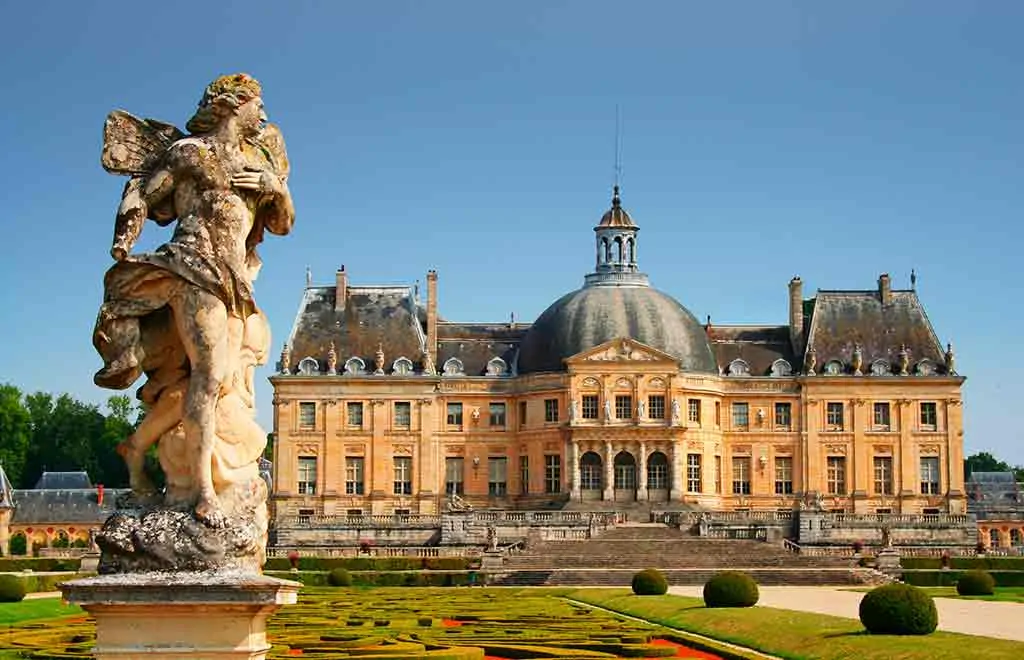
The construction on Château de Vaux le Vicomte began in 1656 and was overseen by Louis XIV, which led to the castle becoming the first example of French Classicism infused with Louis XIV style features, which later became immensely popular in France.
The design of the building, the interiors, and the landscape followed the vision of Louis XIV, who wanted to build the most magnificent castle in France. Today, the castle is still one of the prettiest French châteaux. Only 60 kilometers away from Paris, it’s an amazing day trip choice.
Where: Maincy
When: 17th Century
Open for visit: Yes, check here for more information.
Click here to buy your tickets to the Château de Vaux le Vicomte
15. Château des Milandes
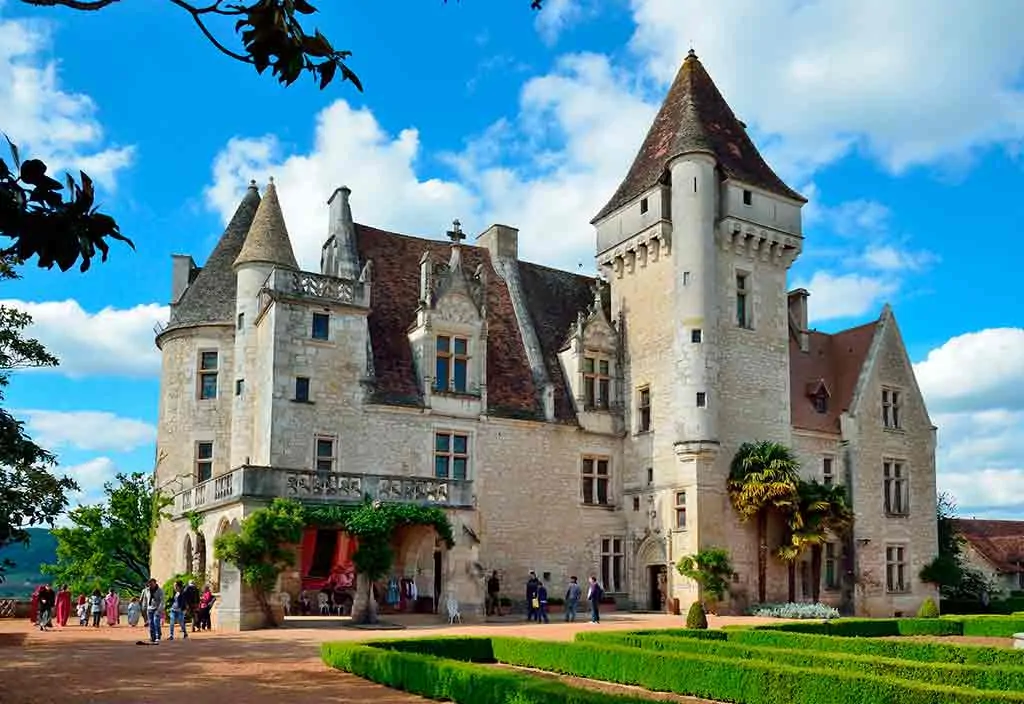
Located in the Dordogne region, in the south of France, Château des Milandes is a stunning example of Gothic architecture.
Although it dates back to the 15th century, it achieved its current glory only in the 1940s, when it was purchased by famous singer and dancer Josephine Baker, who turned it into a private residence for her large family.
Today the castle is a historic monument, and visitors can explore both the interiors and the beautiful gardens.
Where: Dordogne region
When: 15th Century
Open for visit: Yes, check here for more information.
16. Château de Roquetaillade
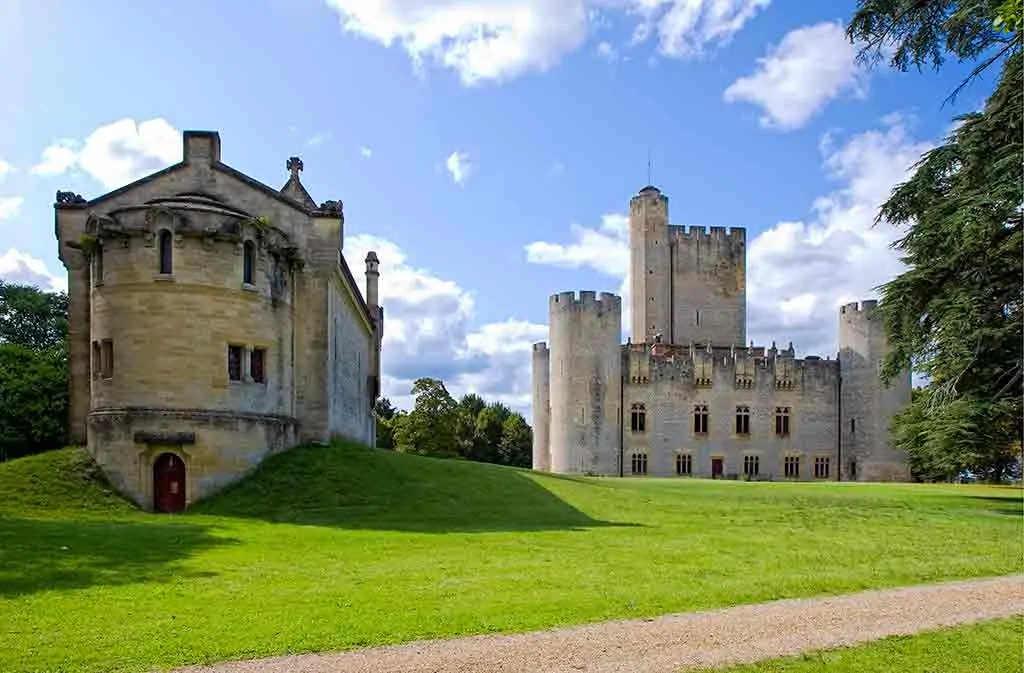
Located in Bordeaux, Roquetaillade is a famous castle that replaced fortifications built by Charlemagne the Great more than a millennium ago.
The castle underwent significant restoration in the 19th century under the supervision of Gothic expert Eugène Viollet-le-Duc. A private residence for over 700 years, the castle has been open to the public since 1956, even though the same family still lives there.
Where: Mazères near Bordeaux
When: 18th Century
Open for visit: Yes, check here for more information.
17. Mont Saint Michel
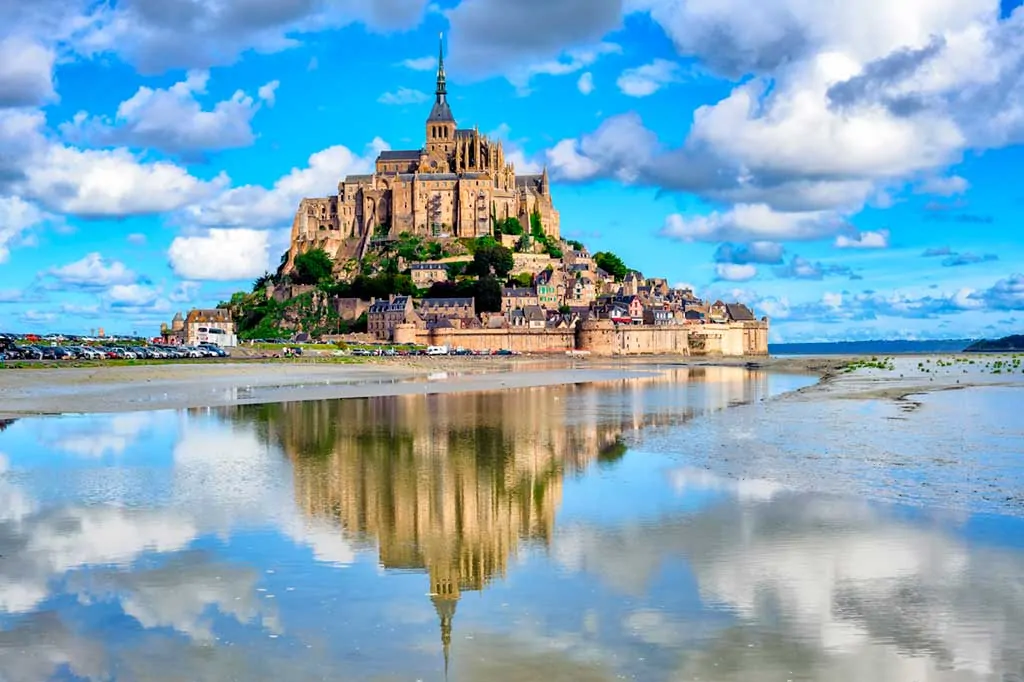
Although not technically a castle, Mont Saint Michel is one of the most spectacular sights in France. While it looks like a castle, Saint Michel is a fortified city built around an 8th-century monastery.
Perched on a tall hillside on the coast of Normandy, Saint Michel becomes an island when the tide comes in, which removes all access except by boat. Besides the abbey complex, the grounds of Saint Michel include charming gardens, stunning panoramic views, historic sites, and artist studios.
Where: Near Avranches
When: 13th Century
Open for visit: Yes, check here for more information.
Click here to book your day trip to Mont Saint Michel from Paris.
18. Château de Chantilly
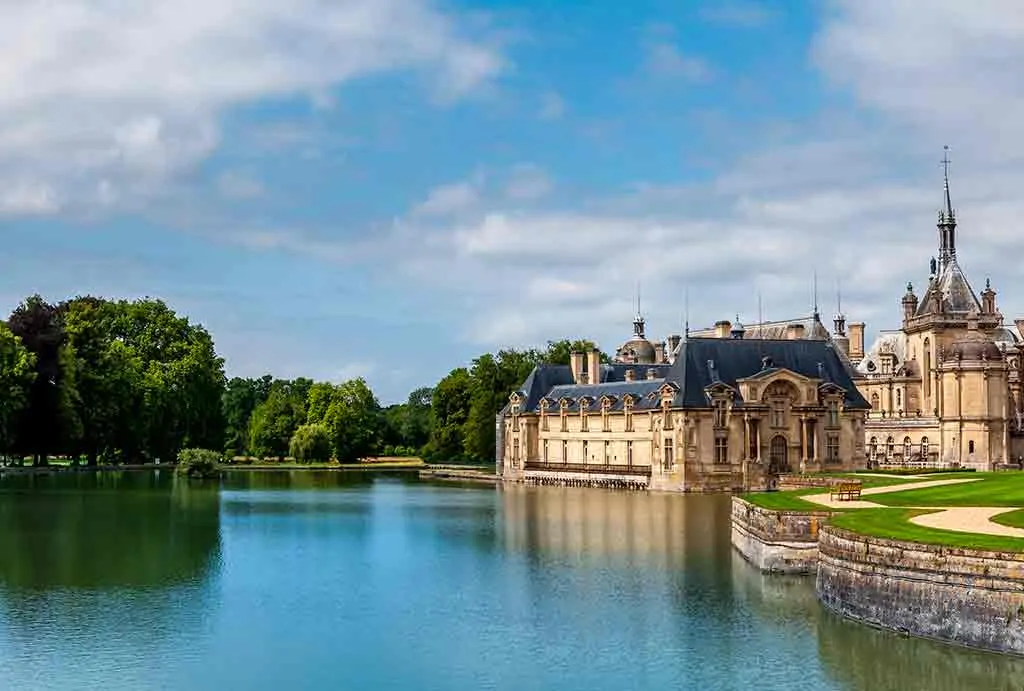
Located near Paris, Château de Chantilly is a magnificent castle surrounded by manicured lawns, lakes, canals, and woodland. Set amid such a stunning setting, the castle has plenty of other things to offer, including the greatest collections of fine art in France.
Now part of the Institute of France, the castle belonged for many decades to Duke Aumale, a passionate art lover who donated his collections on the condition they would remain in the castle.
Besides the rich interiors, the grounds of the castle are also well worth exploring as the gardens are carefully manicured, each in a certain theme from Chinese to English.
Where: Chantilly (about 50 kilometers north of Paris)
When: 1560
Open for visit: Yes, check here for more information.
Click here to buy your skip-the-line tickets to the Chateau de Chantilly.
19. Chaumont-sur-Loire
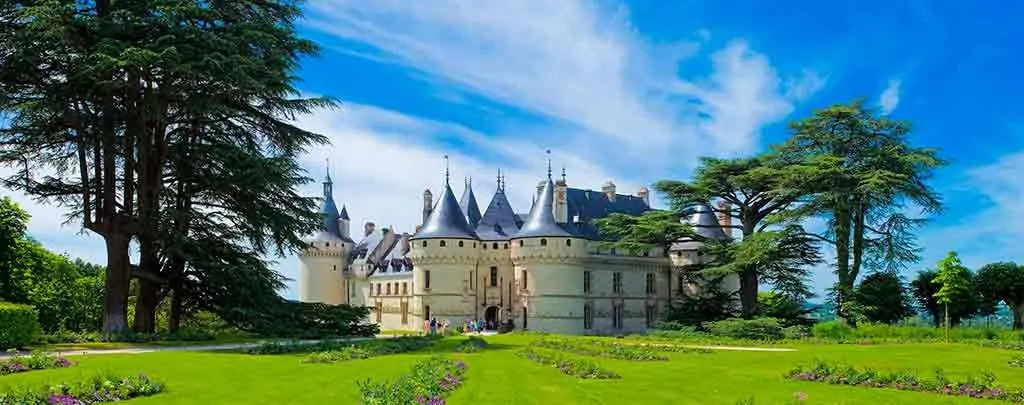
Set in the Loire Valley, Château Chaumont-sur-Loire is one of the most visited castles in the area. Founded as early as the 10th century, the castle entered into the possession of the Amboise family and continued to serve as a family residence for the Amboise descendants for over 500 years.
Demolished by Louis XI, who wanted to punish the Amboise family for opposing him, the castle was rebuilt by another descendant of the Amboise between 1468 and 1566. From then on, the Renaissance-style castle remained unchanged, with 19th-century additions to the interiors. Today, the castle is a protected historical monument that hosts events and exhibitions.
Where: Loire Valley
When: 10th Century
Open for visit: Yes, check here for more information.
Click here to buy your skip-the-line tickets to Château Chaumont-sur-Loire.
20. Flaugergues Castle
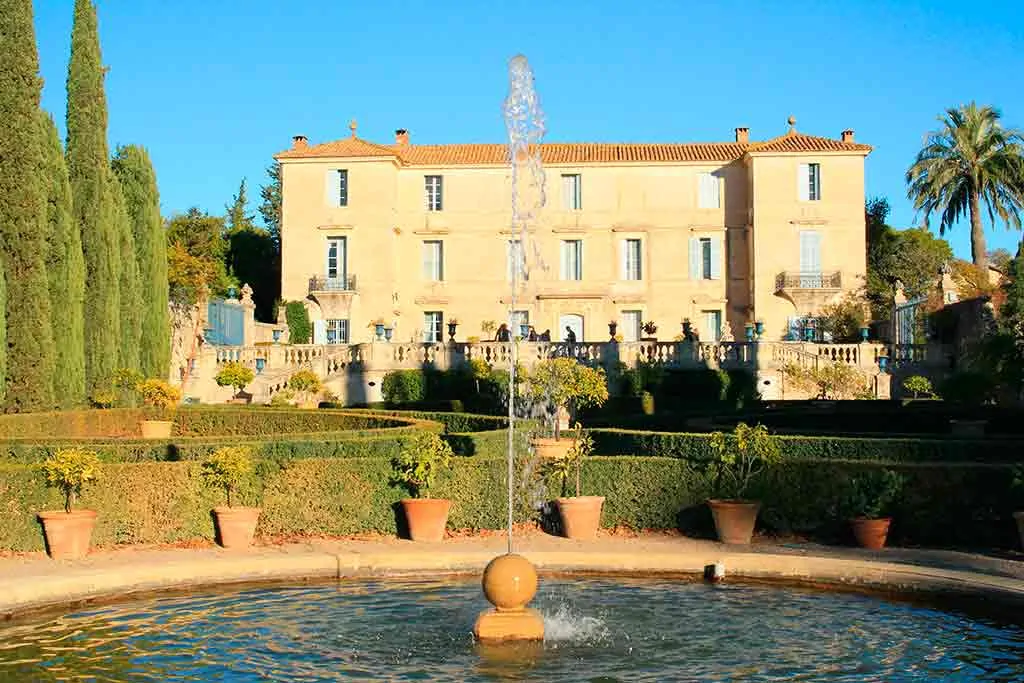
Set in the south of France, near Montpellier and the Mediterranean coast, Flaugergues is a charming castle with striking interiors. Although on the outside, the castle is not as grand and impressive as other French castles, it has beautiful rooms with antique furniture and tapestries.
Additionally, the English-style garden is a perfect place to relax and admire the beautiful nature and the interesting architecture of the castle. On the grounds of the castle, visitors will find a wine-tasting cellar.
Where: Near Montpellier
When: 1696
Open for visit: Yes, check here for more information.
21. Langeais Castle
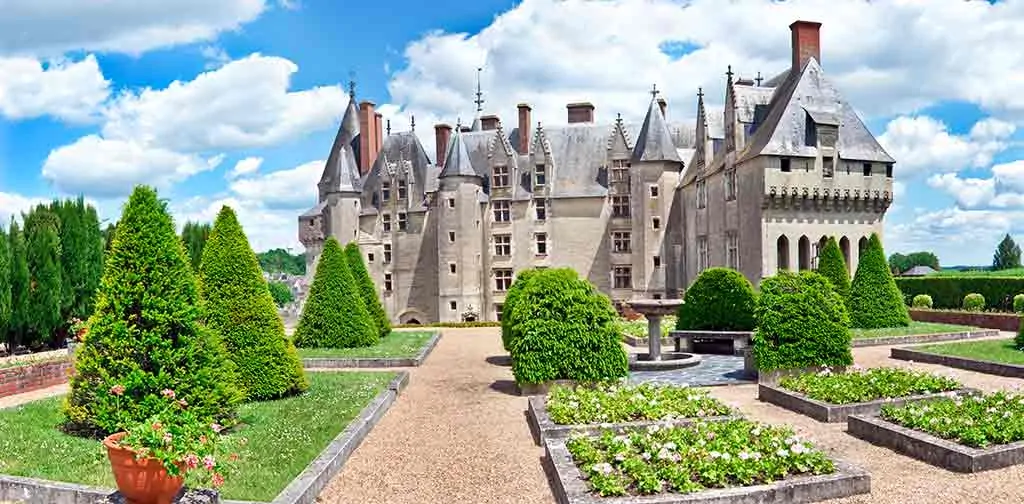
The present Langeais Castle dates back to the late 15th century after its former version was destroyed during the Hundred Years War between England and France. After reconstruction, the castle suffered a few other modifications.
The most attractive feature of Langeais is the amazing collection of original medieval furniture and tapestries that adorn its interiors. On the grounds of the castle, staff re-enacts medieval games and swordplay for visitors. Less busy than other castles in the Loire Valley, Langeais is a charming alternative to more popular castles in its vicinity.
Where: Place Pierre de Brosse, Langeais
When: Between 1465 and 1469
Open for visit: Yes, check here for more information.
22. Château Gaillard

Located in a picturesque setting with views over the Seine, Château Gaillard is one of the most beautiful places in Normandy. Built at the end of the 12th century by Richard Lionheart, the castle passed down from the English to the French and back several times before being demolished at the order of French King Henry IV in 1599.
Fortunately, the demolition did not affect the thick walls, and the castle’s ruins remained an impressive sight for centuries to come. Visitors can explore the ruins all year round, while the king’s rooms are only open to access during the high season, from March to November.
Where: Les Andelys
When: 12th Century
Open for visit: Yes, check here for more information.
23. Château Fontainebleau

Only 55 kilometers away from Paris, Fontainebleau is one of the most visited French castles. An original castle was built on location in the 12th century to serve as a hunting lodge for Louis VII, King of France.
Throughout the centuries, royal figures have expanded and embellished the castle, transforming it into one of the largest and most grandiose French châteaux. A mix of Classicism and Renaissance styles, the castle is famous for its opulent interiors and large, unique gardens.
Where: Fontainebleau
When: The first building was constructed between 1528 and 1540
Open for visit: Yes, check here for more information.
Click here to buy your skip the line tickets to Château Fontainebleau
24. Château de l’Islette

Château de l’Islette is one of the most unique castles in France due to its location on a small island on the River Indre, which has also given its name: l’Islette actually means “small island” in French. Built between 1526 and 1530, the castle was owned by several noble families and important political figures until the French Revolution.
At the end of the 19th century, however, Château de l’Islette became a favorite hideaway for renowned sculptors Auguste Rodin and Camille Claudel. Today, the castle belongs to the Michaud family, who has restored it and use it as a private residence.
Where: Two kilomètres West of Azay-le-Rideau
When: 1526 – 1530
Open for visit: Yes, check here for more information.
25. Château de Vincennes

One of the most interesting sights in Paris, Château de Vincennes, was built in the 14th century in the French capital’s suburb of Vincennes. Initially a hunting house for King Louis VII, the castle was later developed and fortified to become a royal residence.
It served for centuries as a place of retreat for French royals, but Napoleon III decided in 1860 to donate the castle to the municipality of Paris. Today, the estate is a public park. Both the castle and a 16th-century royal chapel can be visited on the grounds.
Where: Avenue de Paris, Vincennes
When: 14th Century
Open for visit: Yes, check here for more information.
Click here to buy your skip-the-line tickets to Château de Vincennes
26. Château de Sully
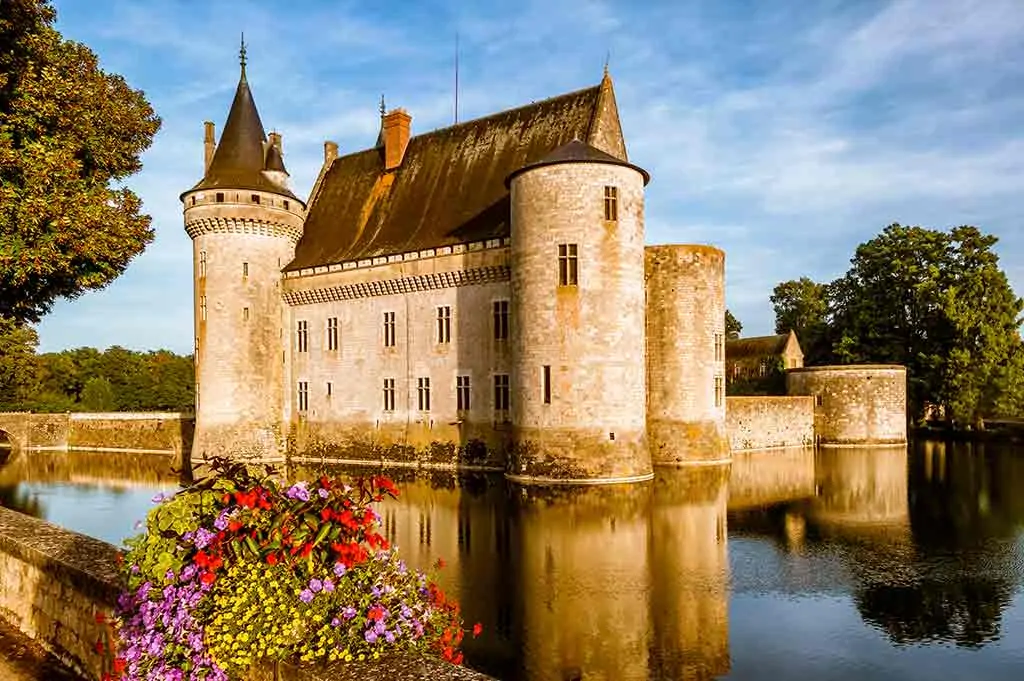
Château de Sully is another impressive sight on the castle-filled Loire Valley. Built at the end of the 14th century, Sully is a massive medieval fortress listed as a UNESCO heritage site.
In the 16th century, this historic monument was owned by Maximiliano de Béthune, the first Duke of Sully, who developed the fortress into a more refined residence, adding important features and creating a park.
Many important French political and historical figures stopped at the château, including King Louis XIV and writer and philosopher Voltaire. Besides the intriguing history, the castle has stunning apartments filled with period furniture, medieval tapestries, and artworks.
Where: Rue du Château, Sully
When: 14th Century
Open for visit: Yes, check here for more information.
27. Château de Joux

Originally a wood structure built in the 11th century, Château de Joux was gradually extended into a powerful fort complex three centuries later. From the 17th century to the 19th century, the castle functioned as a prison.
Visitors can find today a striking structure that houses a large collection of arms, ammunition, instruments of war, and other military artifacts. Several art galleries also function on the grounds.
Where: La Cluse-et-Mijoux
When: 11th Century
Open for visit: Yes, check here for more information.
28. Papal Palace
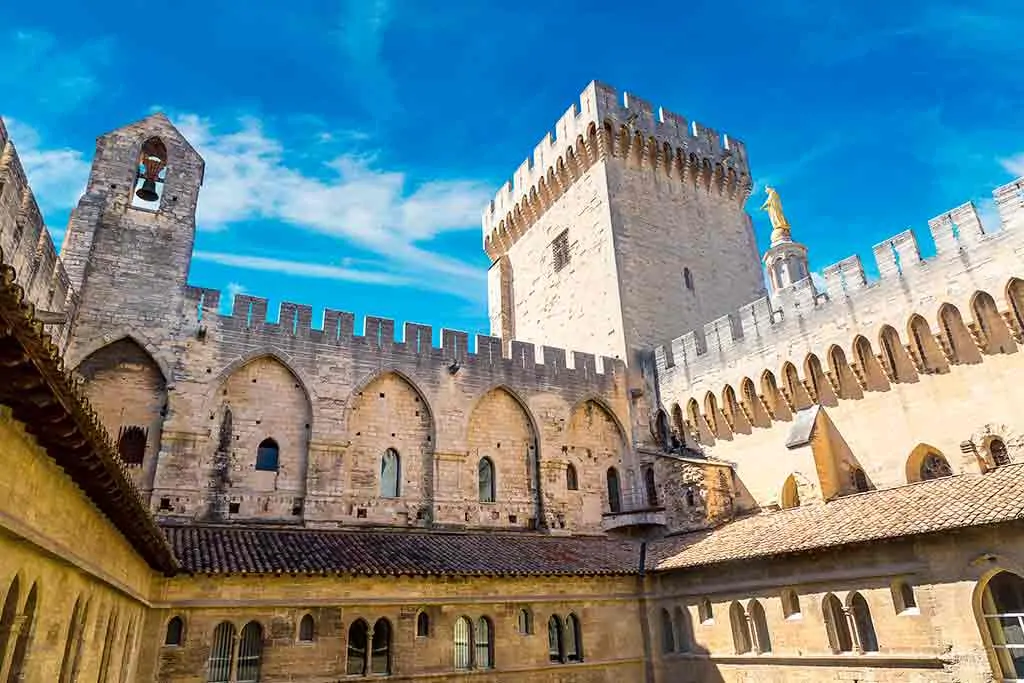
The Palace of the Popes is the largest Gothic structure in Europe and one of the most significant constructions from the Middle Ages. Initially a convent whose construction began in 1252, it was chosen as the seat of the Papacy in 1309 following a rebellion in Rome.
Quickly, the Palais became one of the main centers of European Christianity. Attracting more than half a million visitors each year, the Palais is included among the most tourist places in France. The palace is located in the town of Avignon, in Provence.
Where: Avignon
When: 14th Century
Open for visit: Yes, check here for more information.
Click here to buy your fast track tickets for Palais des Papes & Pont d’Avignon
29. Château de Villandry

Located in the Loire Valley near many other impressive castles, Château of Villandry is the last grand castle dating back to the Renaissance era. With sober architecture emphasized by its beautifully manicured gardens, Château de Villandry is an exquisite sight.
The history of the castle began in the 14th century when it was the setting of a peace agreement between King Philip II of France and Richard I of England. In the 17th century, the castle was expanded into a fortress.
Most visitors are entranced today by the extraordinary gardens of Villandry, which cover four terraces with a unique theme, restored in the 20th century based on medieval documents.
Where: 3 Rue Principale, Villandry
When: 16th Century
Open for visit: Yes, check here for more information.
Click here to book your tickets to Chateau de Villandry
30. Fort de Salses
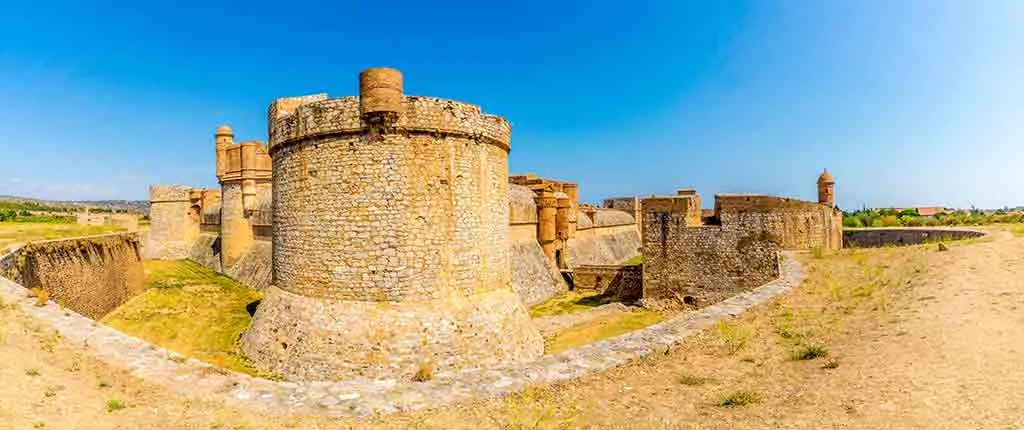
Fort de Salses is unique among French castles because it was built with the goal of serving as a military outpost. A massive fortress from the late 15th century, its construction was ordered by Catalan Monarchs.
Situated in a region between France and Catalonia that now is part of the French Pyrenees, the castle has had a troubling history but lost its strategic importance after being repeatedly besieged. Since 1642, it belongs to France.
Where: Salses-le-Château
When: 15th Century
Open for visit: Yes, check here for more information.
Click here to book your tickets to Fort de Salses.
31. Château de Cheverny

Château de Cheverny is one of the many French castles in the Loire Valley. Built in the 14th century, the castle has belonged to the same family ever since. The interiors were redecorated in the 17th- and 18th- centuries and the sumptuous apartments are open for visits.
The grounds of the castle include a tourist train that rides through the English-style gardens and a large pond where visitors can hire a boat.
Where: Cheverny
When: 14th Century
Open for visit: Yes, check here for more information
32. Château d’Angers
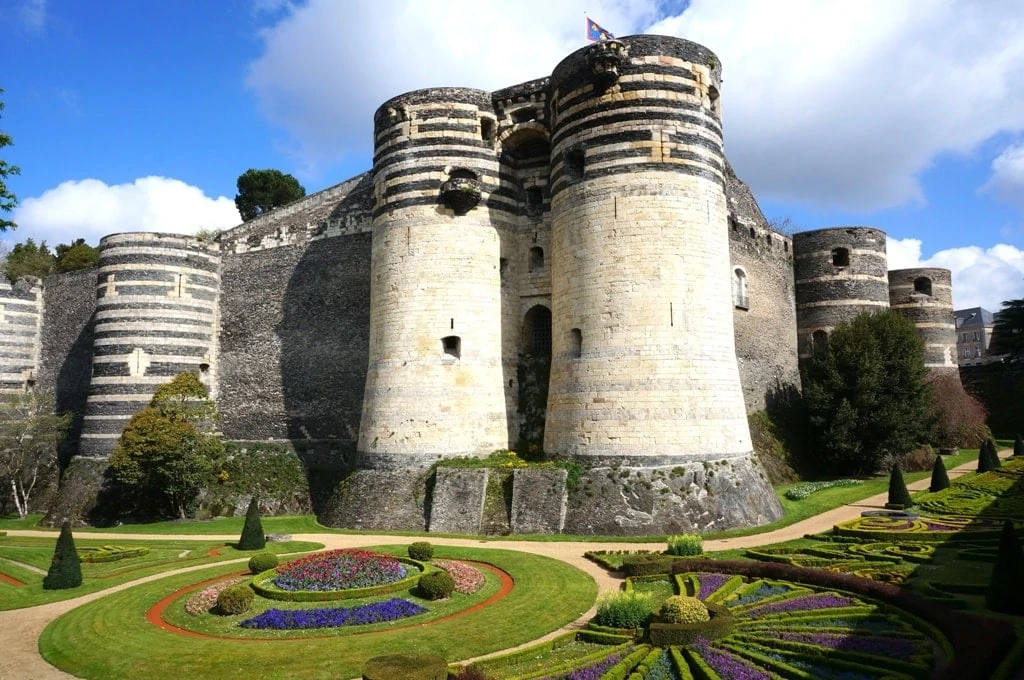
Also, in the famous Loire Valley, Château d’Angers was built more than a thousand years ago as a residence for the Counts of Anjou. Today, the castle houses an important collection of medieval art and tapestries, including the Apocalypse Tapestry, dating back to the late 14th century.
While the interiors are impressive, the exterior of the castle has not been embellished during Renaissance as other early medieval castles have been. Château d’Angers is, however, a refined testimony of an important historical era.
Where: 2 Promenade du Bout du Monde, Αngers
When: Its construction began in the 9th century and was expanded to its present size in the 13th century.
Open for visit: Yes, check here for more information.
Click here to book your fast-track ticket to Château d’Angers
33. Tours de Merle
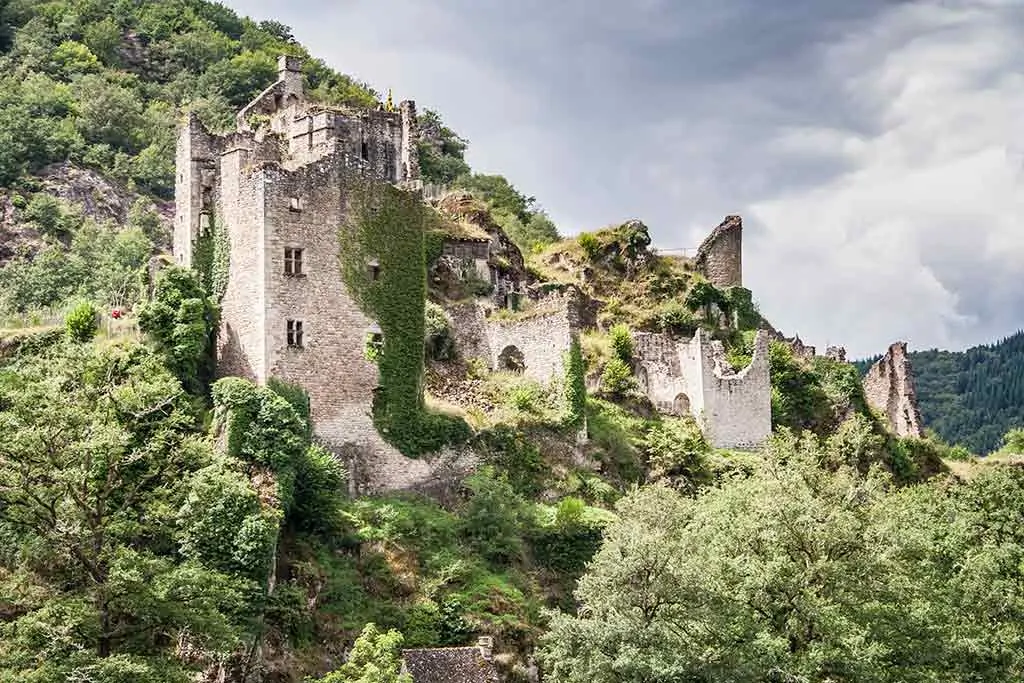
The ruins of a large castle complex, Tours de Merle, is located on the side of the Massif Central. Built in the 12th century, Merle included actually seven castles and two chapels at its peak of development in the 14th century.
Although in ruins due to several sieges during the 100 Years War, the feudal complex has retained some of its grandeur and is now listed as a historical monument. The ruins are situated in the heart of a large woodland. During the summer, medieval-themed activities await curious visitors.
Where: Saint-Geniez-ô-Merle
When: 12th Century
Open for visit: Yes, check here for more information.
34. Château de Bonaguil

Château de Bonaguil is a fortified structure from the early 17th century, now mostly in ruins. Located in Saint-Front-Sur-Lemance, this was once a grand feudal castle with a solid defense system.
To reach the castle, visitors must follow a series of steep stairs up the hillside. The climb, however, is worth it as the grounds of the castle include interesting attractions such as artworks and various medieval objects.
Where: Saint-Front-sur-Lémance
When: 17th Century
Open for visit: Yes, check here for more information.
35. Palace of Versailles
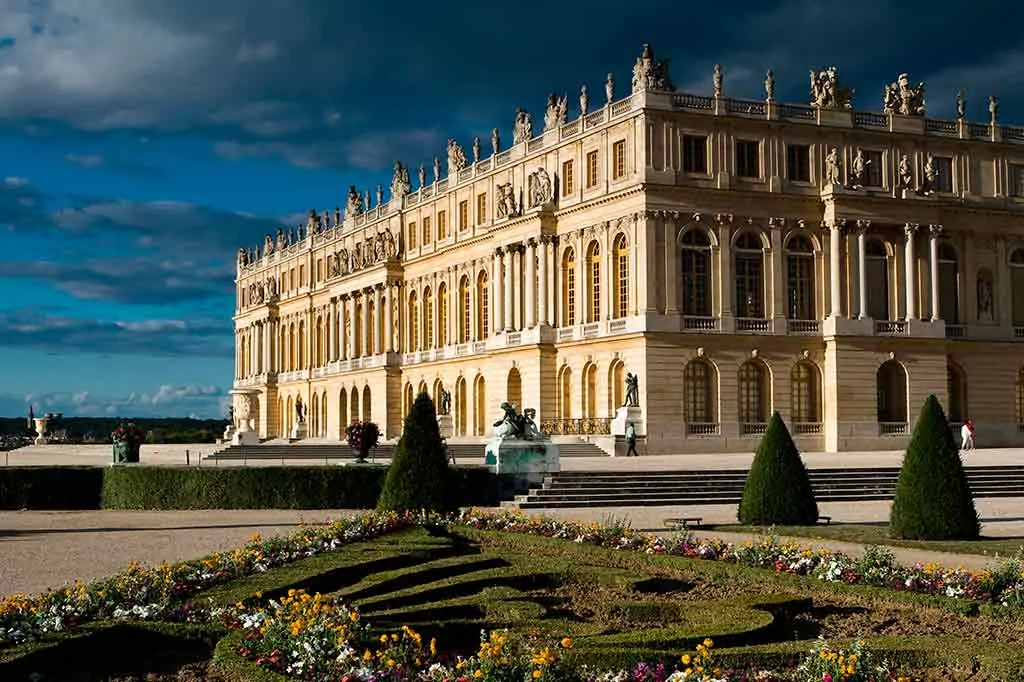
Undoubtedly one of the best castles in France and in Europe, the Palace of Versailles is an extraordinary château whose opulence is unmatched. Built-in 1631 by King Louis XIII, Versailles was the seat of French Power for centuries.
Today, the palace is a museum that showcases the most important events in French history. With 2,300 sumptuous rooms, immense gardens, and a Grand Canal, Versailles sees millions of visitors each year. The most impressive part of Versailles is the Hall of Mirrors, built of 350 mirrors.
Where: Versailles
When: 1631
Open for visit: Yes, check here for more information.
Click here to buy your skip-the-line tickets to the Palace of Versailles (there is also an option with transfer from Paris)
36. Château d’Annecy
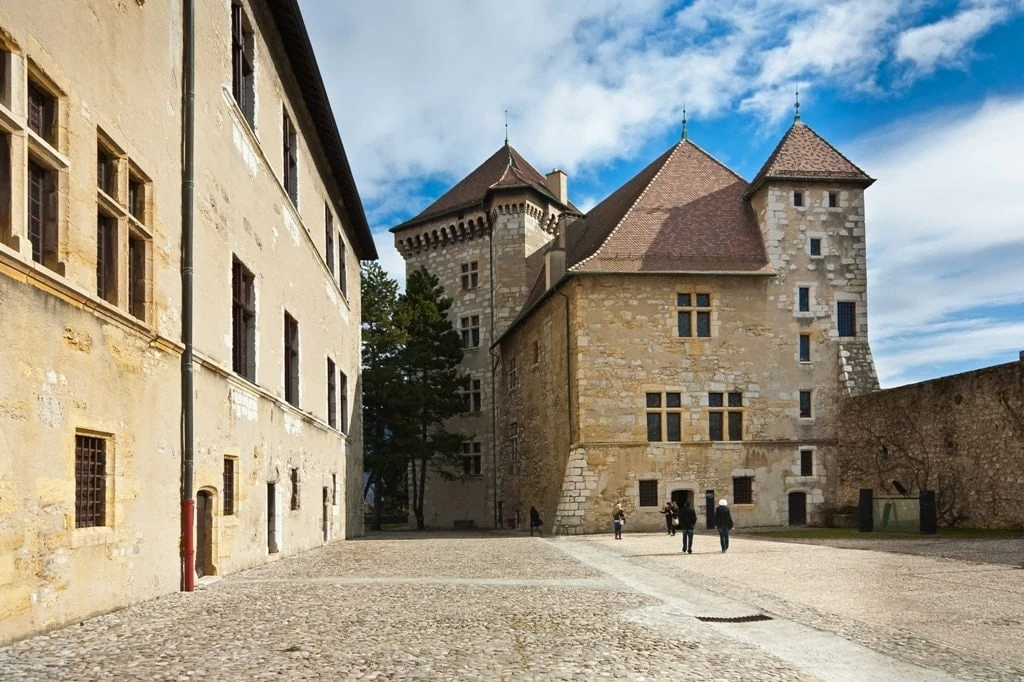
Château d’Annecy is a gorgeous castle located at the heart of Annecy, a small town on the shore of Lake Annecy in southern France. Set amid plenty of other important medieval structures, the castle was built in the 13th century and expanded in the 16th century to its current form.
Once the residence of the Counts of Geneva and other noble families, the castle was converted into a museum in 1953. Its largest collections focus on paintings and sculptures. One of the most attractive things about the castle is its location on a hill, with views over Lake Annecy and the surrounding mountains.
Where: 1 Place du Château, Annecy
When: 13th Century
Open for visit: Yes, check here for more information.
37. Château de Verteuil

Château de Verteuil was built in 1080 to serve as a private residence for the La Rochefoucauld family, and it has been owned by the same family for a bit less than a millennium.
Located in Verteuil, a small village on the banks of the Charente River, the castle suffered a lot of damage throughout the centuries, being destroyed and rebuilt repeatedly.
This led to a mix of styles and features, which makes Château de Verteuil a unique and interesting sight. Due to being privately owned, the castle can only be visited on a guided tour. Guests can visit the chapel, the inner courtyard, and the gardens.
Where: Verteuil-sur-Charente
When: It dates back to 1080 and has since been extensively rebuilt
Open for visit: Yes, check here for more information.
38. Château de Val

Château de Val is one of the most beautiful castles in central France. Built in the 13th century, it has been well preserved throughout time. With its amazing location on a peninsula in an artificial lake, the castle’s unique setting is not the only thing that attracts attention.
Visitors can enjoy the view of sailing boats and even a beach on the estate. The interiors of the castle are also stunning vista. On the grounds of the castle, there are often free activities and entertainment available for both adults and children.
Where: Les Fontilles, Lanobre
When: 1514–1522
Open for visit: Yes, check here for more information.
39. Rocamadour
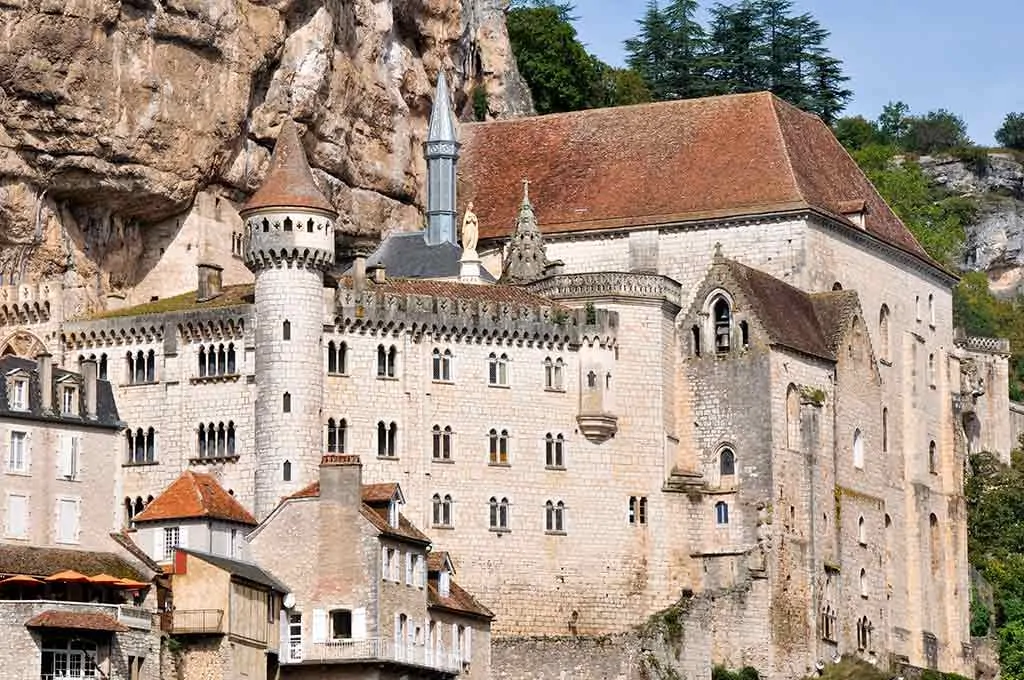
Built into a cliff length of 120 meters and sitting high above a large canyon, Rocamadour is undoubtedly one of the most scenic places in France. In fact, Rocamadour is a tiny village housed inside a fortified structure.
With a long and fascinating history, the place attracted pilgrims even as early as the 12th century, when it was known as a worshipping place due to housing the relics of Saint-Amadour.
The central section of Rocamadour, which is also the highest, includes a complex of eight churches and chapels carved into the rock, along with the ramparts of a medieval château.
Where: Rocamadour
When: 14th Century
40. Château de Pierrefonds

Château de Pierrefonds is a beautiful castle located on the edge of the Forest of Compiegne, near Paris. Built in the 12th century, the castle was meant as a military fortress and features some of the most impressive architecture found in defense structures of this type.
Besieged in 1617, the castle regained its glory in the 19th century when it served as a private residence for Napoleon. Although neglected for a while, the castle has been restored with great concern for its original design, which includes a mix of styles, according to the preferences of its many owners throughout the centuries.
Where: Rue Viollet le Duc, Pierrefonds
When: 1393-1407
Open for visit: Yes, check here for more information.
Click here to buy fast track tickets to Château de Pierrefonds
41. Château de Vitre

The long history of Château de Vitre began in the 11th century when the castle was built as a massive stone fortress. It was enlarged in the 15th century with a grand tower and a drawbridge, and new additions transformed it into a residence for its owners of noble descent.
Throughout the centuries, the castle was an important setting for significant historical events and suffered damages from sieges and attacks as a consequence. At the beginning of the 19th century, it was purchased by the town of Vitre and transformed into a town hall. A museum also functions in the same location.
Where: Vitré
When: 11th Century
Open for visit: Yes, check here for more information.
With such a wide range of stunning castles, each with a unique and intriguing history, France is a paradise for those looking for settings where romance, history, and beauty converge. If you want to visit a French castle, our list will inspire you to find the château that best matches your vision of a fairytale location.
FAQs About the best castles in France
The best castles in France to visit are the palace of Versailles in Paris, the beautiful castles of the Loire Valley like the Chaumont-sur-Loire Castle, the impressive Castle Comtal of Carcassonne, or the Castle of Val in the region of Auvergne-Rhône-Alpes.
One of the most visited castles in France is the Palace of Versailles due to its close proximity to Paris.
The most beautiful château in France is the Château de Chenonceau in the Loire Valley. Yet, with so many châteaux spread around France, it is hard to pick the most beautiful one. Among the most beautiful châteaux in France are also the Château de Fontainebleau (Seine-et-Marne) as well as Mont Saint-Michel (Normandie).
